

Bristol Rhythm & Roots Reunion is featured on our front cover. The festival celebrates its 22nd annual event September 8–10, 2023 on State Street in Historic Downtown Bristol, Virginia–Tennessee.



July







Bristol Rhythm & Roots Reunion is featured on our front cover. The festival celebrates its 22nd annual event September 8–10, 2023 on State Street in Historic Downtown Bristol, Virginia–Tennessee.



July




Just when you thought it was safe to go outside—you hear—Covid! As we approach a new season, we are shaken again by the dreaded thought of wearing masks, getting sick with Covid-19, and having our schedules redirected. However, I would like to think that we all have learned a thing or two about what to do and what not to do during a pandemic, and we will be permitted to have choices instead of mandates. So, do we grab from that stash of masks hidden in the bottom of that drawer? Maybe. I personally don’t have a problem wearing a mask. I think that we do see fewer cases of flu and colds. But, for me, it was an adjustment. At first, I felt I couldn’t breathe. I found myself asking, “Now what? I can’t breathe. I am going to die from suffocation!” But I explored wearing different masks and found two that worked for me. I washed those suckers so much that they are now falling apart. I still got ’em, but I guess I better start looking for two more masks!
Autumn is my favorite time of the year. I love pulling out my sweaters and scarves and wearing them with jeans, boots, and jackets. It is the season for different decorations inside and outside. Whether or not you are a sports fan, you can catch that feeling of excitement from football games and outdoor events, such as the Bristol Rhythm and Roots Reunion Festival. Even with Covid raising its ugly head, it is exciting to see so many activities ongoing.
As we move into the new season, we know that the holidays are just around the bend. I have already begun my Christmas shopping. As you start your season of shopping, check out JCP’s bookstore. We are offering personalized gift baskets. Each gift basket will have at least one book, and we are offering different-sized baskets and various themes to choose from. Is it for a teacher? Is it for a gardener? Is it for a person who loves to cook? Stop by our JCP bookstore, Books & Gifts, to find that special gift for the holiday gift-giving season. Books make great gifts!
We would like to welcome Allison Chudina back to our JCP team. Among many the hats she will wear, she returns with resurrecting our book blog— Bookmarked . It features insights on book publishing, topics of the month, spotlighting authors and books, highlights of Voice Magazine for Women , engaging questions, and much more. We will soon get our Bookmarked podcast online, which will support our blog. Watch for details, keep in the know, and follow our blog. Sign up for our newsletters for the latest news and book discounts. Welcome back, Allison! Thank you to all of you—fans, supporters, readers, advertisers, authors, contributing writers, and more! We could not be here without all of you! Thank you all!
Have an awesome autumn!
And Happy Birthday to me!
Thought of the month: “The knock at the door is unknown. It is when you have the courage to open that door that you decide to let hope or hopeless come in.”
— Jan HoweryVerse of the Month: “They that sow in tears shall reap in joy.”

— Psalms 126:5 KJV


Janie C. Jessee, Editor-in-Chief

PUBLISHER
Jan-Carol Publishing, Inc PO Box 701 Johnson City, TN 37605
EDITOR-IN-CHIEF
Janie C Jessee, 423.502.6246 publisher@jancarolpublishing.com
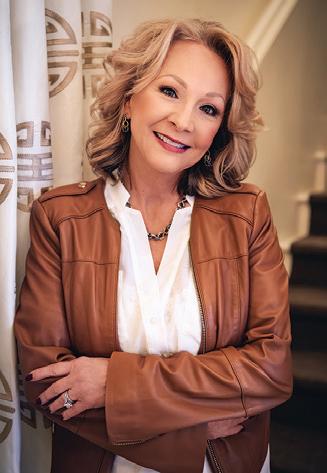
CONTRIBUTING WRITERS
Savannah Bailey Communications Director/Production Editor communications@jancarolpublishing.com


Allison Chudina Editorial/Retail Assistant office@jancarolpublishing.com
GRAPHICS/PRODUCTION

Tara Sizemore Senior Graphics Designer tara@voicemagazineforwomen.com graphics@jancarolpublishing.com
Office Phone/Fax: 423.926.9983

Books & Gifts: 423.212.0200




DISTRIBUTION
Karen Corder Staff

PUBLISHED BY JAN-CAROL PUBLISHING, INC. (Volume 20, Issue 9)












While every precaution has been taken to ensure accuracy of the published material, Jan-Carol Publishing, Inc. / Voice Magazine cannot be held responsible for opinions or facts provided by its authors, advertisers or agencies. All rights are reserved. Reproduction in whole or part is prohibited without written permission. Agencies, Advertisers and other contributors will indemnify and hold the publisher harmless for any loss or expense resulting from claims or suits based upon contents of any advertisement, defamation, libel, right of privacy, plagiarism and/or copyright infringement. The views expressed in Voice Magazine for Women are not necessarily those of the publisher. © 2023
EDITORIAL MISSION:
Voice Magazine for Women wants to provide a useful and complete reliable source of information for women and their families. We seek to celebrate women’s successes, and support their growth by defining and recognizing their needs and providing a concentration of resources for them. We want to be that “link” to all women.

When consumers think about which stores to patronize, locally owned businesses may be the smartest option for a number of reasons—not the least of which is the way such enterprises benefit the communities they call home.
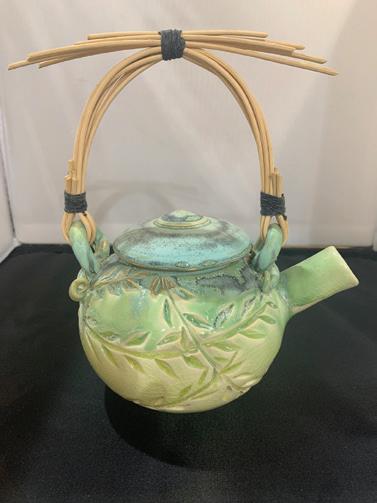
Shopping locally means that more money will stay in the community. According to recent research from Civic Economics, local eateries return nearly 79 percent of revenue to the community, compared to just over 30 percent for chain restaurants. Overall, for every $100 spent at a local business, around $73 remains in the community, versus roughly $43 when shopping at a non-locally owned business.
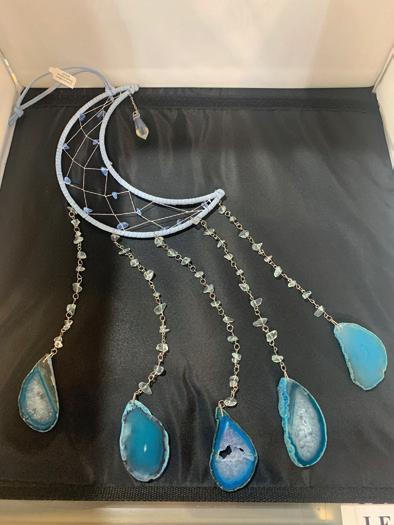

Local business owners typically are inclined to go the extra mile for their customers and are personally invested in the services and products they are selling. As a result, shopping locally tends to be a personalized experience. Furthermore, a local business owner may be more amenable to ordering products for specific clientele. Such personalized service is typically not accessible when shopping big box stores or other shops where owners are off-site.
Waiting in long lines for checkout or to pick up merchandise ordered online can drain consumers’ energy and contribute to stress. Local businesses tend to have short lines and small crowds, which can lead to a more pleasant shopping experience.
Local businesses generate more tax revenue per sales dollar, according to Rubicon, a digital marketplace for waste and recycling businesses. Taxes paid by local small businesses go to support schools, parks, roads, and other programs that benefit the community as well.
Local businesses often support good work in the community, such as nonprofit groups. These can include schools and sports teams, among other groups. According to Dr. Sue Lynn Sasser, professor of economics at the University of Central Oklahoma, studies indicate nonprofits “receive 250 percent more support from small businesses than larger ones.”

Local business support other local businesses by buying and selling among each other. A local, independently owned restaurant may source its ingredients from local farms, which means visitors to such eateries are supporting multiple local businesses each time they dine out.
Small businesses are a boon to the economy, particularly local economies. These enterprises help their communities in a multitude of ways.
-
tive musical direction, showcasing her songwriting prowess and unique sonic palette, further solidifying her reputation


of folk-pop coast to coast and to South America. Moss’s jazzy vocals are enhanced by her proficiency at upright bass, acoustic guitar, and bass clarinet, and she’s got more than a little sass. Beyond her work with Handmade Moments, Anna has embarked on her own musical journey with the side project Anna Moss and the Nightshades. Under this

seamlessly blend Western swing, vintage country, and bluegrass into their unique sound. Renowned for their breathtaking harmonies and instrumental prowess, they have earned numerous accolades, including the Western

Swing Album of the Year at the 2020 Ameripolitan Music Awards. Their dynamic live shows have graced prominent stages such as the Grand Ole Opry and the Kennedy Center, as well as prestigious festivals like the Newport Folk Festival and the National Folk Festival. Sharing the stage with notable figures like Willie Nelson and Ricky Skaggs, The Quebe Sisters continue to leave an indelible mark on the contemporary Americana music scene.

Philadelphia native Sasha Dubyk is a vital creative force within the band Damn Tall Buildings. As a dedicated musician and songwriter, she contributes her rich vocals, masterful fiddling skills, and compelling stage presence to the group’s distinctive blend of bluegrass, folk, and Americana. With her roots deeply planted in traditional and contemporary musical influences, Sasha’s contributions help shape the band’s dynamic sound, which is characterized by its heartfelt storytelling and infectious energy. Her seamless integration of traditional and modern elements adds a unique dimension to the band’s performances, making her an integral part of the group’s captivating musical journey.
Twisted Pine, an inventive and genre-bending ensemble, boasts the impressive talents of two female members who play pivotal roles in shaping their dynamic sound. Kathleen Parks, a standout fiddler, and Rachel Sumner, a remarkable vocalist and guitarist, contribute to the band’s captivating fusion of bluegrass, folk, and indie rock. Their collective musicianship, harmonies, and stage presence have been instrumental in the band’s success, as evidenced by their critically acclaimed albums and widespread recognition. Twisted Pine has earned praise from both fans and

music critics, securing honors like the International Bluegrass Music Association Momentum Award for Band of the Year. The group has graced prestigious stages including the Newport Folk Festival and has shared bills with prominent artists like Greensky Bluegrass, Darlingside, and Dwight Yoakam, solidifying Twisted Pine’s position as an influential and trailblazing force within the contemporary roots music scene.
Singer-songwriter Kelsey

Waldon has carved her place in the Americana and country music landscape with her authentic storytelling and soulful voice. Drawing inspiration from classic country legends and contemporary artists alike, her music channels a timeless sound that resonates with audiences. Her sophomore album White Noise/White Lines received widespread acclaim, with her poignant songwriting earning comparisons to the likes of Loretta Lynn and John Prine. Waldon’s success includes recognition as an emerging artist, with an appearance on NPR’s “World Cafe” and a signing with John Prine’s label Oh Boy Records. She has performed at renowned festivals such as Stagecoach and AmericanaFest, and she’s shared stages with artists including Tyler Childers and John Prine. Kelsey Waldon’s unwavering commitment to her roots and her ability to capture the essence of the human experience in her music have established her as a respected and influential voice in modern country and Americana.


GRAMMY-nominated bluegrass musician Missy Raines has left an indelible mark on the genre with their innovative approach. As a trailblazing bassist and vocalist, Raines has shattered boundaries, becoming the first woman to win the International Bluegrass Music Association’s (IBMA) Bass Player of the Year award—an honor bestowed upon her for the tenth time. Drawing inspiration from her jazz and bluegrass influences, Raines’s music seamlessly fuses traditional sounds with contemporary sensibilities. Her acclaimed album Royal Traveller showcases her virtuosity and songwriting prowess, earning rave reviews and cementing her status as a powerhouse musician. The album’s stand-out track “Swept Away” features Raines, Alison Brown, Sierra Hull, Becky Buller, and Molly Tuttle—the first five women to ever win IBMA instrumentalist awards. The artist is also a respected teacher, leading bass workshops and music camps internationally since 1998. With a career spanning decades, Raines continues to redefine the genre and inspire a new generation of musicians.
Musician AJ Lee is making a significant impact on the bluegrass and acoustic music scene with her band Blue Summit. As a vocalist and mandolin player, AJ Lee’s captivating voice and instrumental prowess have garnered atten -



tion for their exceptional blend of traditional bluegrass and modern sensibilities. Drawing inspiration from legends like Alison Krauss and Claire Lynch, Lee has infused her own style into her performances and compositions. The band has toured all across the country and internationally in the U.K., Ireland, and France. The group has amassed a number of prestigious distinctions including Freshgrass Band Contest Winner, IBMA Momentum Vocalist of the Year, and has won the Northern California Bluegrass Society’s (NCBS) Best Female Vocalist award nine times.
Benson, North Carolina native Rebekah Todd stands out as a dynamic musician whose soulful sound bridges the realms of blues, folk, and rock. With a voice that effortlessly oscillates between tender vulnerability and powerful assertiveness, her vocals are a mesmerizing force. Influenced by artists like Bonnie Raitt and Janis Joplin, Todd’s music resonates with authenticity and emotional depth.
Her album Crooked Lines earned critical acclaim, showcasing her songwriting prowess and ability to captivate audiences. Rebekah Todd has graced iconic venues such as The Lincoln Theatre and performed at notable festivals like MerleFest, leaving lasting impressions with her magnetic stage presence. Her remarkable talent has also led her to share stages with acclaimed artists including Keller Williams, Vince Herman, Andy Frasco, and The Fritz, reaffirming her status as a rising star in the contemporary roots music scene.

Erin & The Wildfire, a dynamic ensemble led by the charismatic frontwoman Erin Lunsford, has garnered attention for their soulful blend of rock, funk, and R&B. The band formed as college students in Charlottesville, Virginia. Now based in Richmond, the group is influenced by artists like Aretha Franklin and Amy Winehouse. Erin’s powerhouse vocals take center stage, infusing their music with a captivating energy. The band made their debut on NPR’s Mountain Stage in 2021 and has toured with Sammy Rae & The Friends, The Dip, and Maggie Rose. The band’s dynamic stage presence and genre-crossing appeal has earned them the opportunity to share stages with the likes of Marcus King Band, Jill Scott, The Village People, and Oh He Dead.

Goldpine is a duo comprised of Kassie and Ben Wilson, formerly known as My One and Only. Known for their harmonious blend of folk, Americana, and soul, the band underwent a transformative journey while preserving their distinct musical identity—embarking on a new chapter that reflects their growth and evolution. Kassie’s powerful, evocative vocals serve as the soulful centerpiece of the band, infusing their music with a captivating emotional depth and adding an indispensable layer of authenticity to their sound. With influences ranging from
The Civil Wars to Norah Jones, Goldpine has garnered critical acclaim for their heartfelt songwriting and their performances have graced esteemed venues and festivals across the country including Bristol Rhythm & Roots Reunion and The Bluebird Café. The duo won the Rocky Mountain Songwriter Contest in 2022; the previous year they were finalists in the Kerrville Folk Fest New Folk Competition.
Bristol Rhythm & Roots Reunion celebrates its 22nd annual event September 8–10, 2023 on State Street in Historic Downtown Bristol, Virginia–Tennessee. For full lineup and ticket information visit BristolRhythm.com.

(Photos courtesy Birthplace of Country Music)

(Bristol, TN) Integrated Health Concepts announces a new partnership with Appalachian HerbLab, a new educational and wellness initiative by Herbalist Lori Briscoe. As the region’s leader in integrated, holistic care, Integrated Health Concepts continues to expand its Family Practice with complimentary services that nurture health and well-being.
Briscoe holds a B.A. in Anthropology, an M.A. in Appalachian Studies and Sustainable Development, and is a certified herbalist of the Appalachian School of Natural Health. She is also a writer, educator, and creator and is passionate about deepening the connections between plants, people, and place. She is driven by a mission to help individuals experience what she calls the “Magic & Medicine of Place.” For the past 20 years, she has been educating and inspiring adults and children to value and conserve Appalachia’s biological diversity and rich cultural heritage to empower a sustainable future for the region.
“We are blessed to be able to partner with Lori Briscoe and offer herbal classes here at our Holistic practice. She brings full circle the idea that we can heal from herbs and foods found locally and will demonstrate what benefits are linked to specific plants and how to harvest and prepare them,” said Dr. Schrenker, founder of Integrated Health Concepts.
“My goal is to inspire folks to bring the magic and medicine of this place into our everyday experiences, to reclaim and empower healing for individuals and as communities of place. It’s time to rewrite the storyline of Appalachia. We can be rooted in landscape, history, and culture AND reach new levels of vibrancy. A simple way to begin is with heritage-inspired, modern herbal recipes from the heart of Appalachia and beyond,” said Briscoe, founder of Appalachian HerbLab.
Participants will learn how to bring wild and cultivated plants of Appalachia into the everyday kitchen in simple and creative ways. Briscoe takes familiar recipes and adds her knowledge of the plants of this place to offer healing, nourishment, and flavor. With these additions, your food will offer more nutrition, better overall health, and a greater well-being.
The series kicks off in September in the Integrated Health Concepts’ teaching kitchen and will be held the third Tuesday of each month at 6 pm. Workshops are $45 and tickets can be purchased at integratedhealthconcepts.org .
September 19: A Place-Based Tea Blending Experience
Take familiar teas to the next level with regionally sourced ingredients that add vitamins, minerals, and plant magic to the world’s favorite beverage.
October 17: Autumn Herb-Loving Recipes
Time to add some warming herbs to our collection and marry the home apothecary with the spice drawer. Let’s take Mamaw’s pumpkin pie up a notch…and a few other fall favorites while we’re at it!
November 21: Be Thankful, Be Vibrant
Broths and Stocks–We can elevate our bone broths and soup stocks with some powerful plant allies that when combined, can carry us into the Winter fortified and ready to fight off what comes our way! Let’s play with some of the forest’s finest mushrooms and alliums along with familiar herbs to pack a punch at cold-weather spoilers!
December 19: Last Minute Handmade Holiday Gifts with Purpose
Let’s make an herbal gift that keeps on giving. Herbal bath soaks and more. Give them something they can enjoy in the now and stave off those wintertime blues.
Integrated Health Concept’s mission is to enable well-being through love, compassion, trust, and individualized care. Reminding patients, they must allow healing by choosing love over fear, and enabling patients to be their highest selves through education on nutrition, exercise, love, forgiveness, and holism.

 By April Hensley
By April Hensley
Iwas so excited when the weather finally warmed up this past spring and we could start a vegetable garden. It’s been a great growing season! Now I’m looking forward to seeing what we can cultivate during cooler weather. The first day of autumn is September 23. It’s hard to believe how fast the summer months flew by.
No worries though, with the scorching days slipping away, there’s still plenty to do in the garden. Cleanup, composting, harvesting fruits and vegetables, and tending to the plants still growing will keep us busy. Even more so if you are preserving some of your harvest.
If your hot weather tomatoes, zucchini, and cucumbers have passed their prime, you can rip them up and sow a fall garden of cool hardy plants. Lettuce, spinach, leaf lettuce, kale, spinach, and quick-growing root veggies such as radishes like the autumn temperatures.
For those who are lucky enough to have a wooded area on their property, September into late fall is the time to sow native plants. Native plants help keep forests healthy, provide food for wildlife and pollinators, are beautiful, and might make you a little money in the process.
Many native plants have become rare. Some have been over-harvested for money or personal use causing them to become endangered.
Here are some native and income-producing herbs and trees:

• Ferns
• Mayapple
• Ginseng
• Jewelweed
• St. John’s wort
• Goldenseal
• Black cohosh
• Fruiting trees like apple, cherry, and pear
• Nut-producing trees such as walnut, oak, and pecan
• Poplar trees for lumber

Some trees and plants that are not native to our area have become a problem. Quite a few non-native plants do very well without harm but others become invasive meaning they smother out and damage plants original to the area. Kudzu is a visible example of how much destruction can be done in a short period.
Other invasive plants include:
• Bradford pear
• English ivy
• Honeysuckle
• Some species of bamboo
• Privet hedge
• Tree of Heaven
• Princess Tree
If you have a wooded area that has invasive species, you might consider removing them. It will not be an easy job but your plants and trees will grow stronger and healthier.
You can also create your own wooded space by planting trees in a sunny bare space or fill in a grove of trees. Add native woodland plants around them as they grow.
Nature enthusiasts are known to say that spending time in the great outdoors has a positive effect on their mental and physical well-being. Such an outlook is more than mere speculation, as it turns out spending time in nature provides a host of health benefits that might surprise even the most devoted outdoors enthusiasts.
A 2010 study published in the American Journal of Alzheimer’s Disease & Other Dementias found that engaged persons with dementia in horticultural therapy-based (HT-based) programming solicited higher rates of participation than traditional activities (TA) programming. In addition, a separate 2013 study in the journal Dementia found that exposure to a therapeutic garden had a positive impact on quality of life for people with dementia. And it’s not just dementia patients who can experience the cognitive benefits of time spent in nature, as the Hagley Museum and Library reports that numerous studies have found exposure to nature improves cognitive function.
The potential health benefits of vitamin D are increasingly drawing the attention of medical researchers, and for good reason. According to the Harvard Medical
School, recent research has suggested that vitamin D may offer added protection against conditions such as osteoporosis, cancer, heart attack, stroke, and depression. Exposure to sunshine can help the body generate vitamin D, thus providing further reason to spend time in nature.
A 2019 study published in the journal Scientific Reports found that individuals who spent at least 120 minutes a week in nature were significantly more likely to report good health and psychological well-being than those who spent less time outdoors. Though the authors of the study cautioned that the exposure-response relationship was under-researched, and therefore likely needed to be studied more extensively, in the meantime individuals, after a consultation with their physicians and confirmation that it’s safe to get out more often, can aspire to spend at least 120 minutes in nature each week. The results may speak for themselves.
Nature has a lot to offer, and the benefits of spending more time outdoors may be even more significant than people recognize.


We all know the junk drawer is a safe place where we can toss things and clear the countertop in a hurry. Let’s call it “the last frontier” in home organization. We call it a junk drawer because we throw in everything that has no other home, as well as stuff that may serve a useful purpose several years from now. Don’t worry, it doesn’t mean you are a hoarder; however, if the drawer doesn’t close properly or you can’t find anything, read on.

Let’s begin. Yank open that drawer and empty its contents onto the countertop. Lay a towel down first—there’s no telling what might be in there. It could be extremely icky or even sticky, we just don’t know.
Once you have emptied the drawer, separate everything into piles. First, we have the UFO’s—unidentified found objects. This is where you put mysterious tools that have no obvious purpose, and keys that no longer work. Be sure to see if the keys work anywhere first, then throw them out. Be strong, you can do it!

Next, toss any items that are broken or cannot be identified. Our cast of characters included 23 pens—only 12 actually worked. Other found items: 3-year-old hand sanitizer, a tube of dried-up lip gloss, several broken paper clips and numerous rubber bands, a dead battery, a lone shoestring, three phone chargers for phones we no longer own, a lamp finial, an open packet of flower food, an empty tube of glue, a couple of outdated warranties, an old calculator that doesn’t work, and a wooden nickel.
Now for the fun part: divide and conquer. Go to a dollar store and buy some drawer dividers so you can put similar items into their own little bin space. There’s a certain kind of beauty achieved when you group like things together. Keep only what you need, and you may be surprised by how few things you really use. Donate or throw out whatever is left, and do not move the useless items to some other location to be dealt with later. That’s called cheating.
Finally, put the drawer liners in place and fill them with all the things that are useful. Now, stand back and admire your work. This is your reward for tackling forbidden territory! You’ve taken a space that made you want to cringe and turned it into organizational bliss. It is possible that you will be opening the drawer frequently to enjoy the view. Try to keep it that way but if not, you know what to do.
The kitchen is a busy room in many homes. That popularity likely has something to do with why so many homeowners spend sizable sums renovating their kitchens. According to highlights from the 2022 U.S. Houzz Kitchen Trends Study, the median spend on major kitchen remodels grew by 14 percent from the previous year, and minor remodels increased by 25 percent. Spurred on by increased time spent at home during the pandemic, the main impetus for kitchen remodels according to the study was that homeowners wanted to make these improvements all along and finally had the time and means to do so.

There are many aspects of a kitchen that homeowners can change. Houzz found 94 percent of renovators either fully or partially replaced cabinets in their improvement plans. Cabinets are a major component of kitchen lay -

outs. Cabinets help to establish the aesthetic of a kitchen and serve a useful function, providing necessary storage space to ensure the room does not appear cluttered.
Homeowners have different options when it comes to cabinet renovations, and they may need to decide if they need to replace or reface their cabinets.

Cabinet replacement involves removing all of the existing cabinets before new cabinets are leveled and installed. According to the home improvement resource The Spruce, homeowners can expect to pay between $13,000 and $30,000 for contractor grade cabinets. Cabinet replacement is a good idea when homeowners want to add more cabinet space or create a new layout in the room.
Cabinet refacing is less messy and less disruptive than replacement. All cabinets remain the same size and in the same location. The cabinet boxes must be in good shape to facilitate a refacing. The process involves installation of new drawer fronts and cabinet doors, as well as veneering of the cabinet boxes. New hardware typically is installed as well. The insides of the cabinets typically remain the same. The Spruce says cabinet refacing can be 30 to 50 percent cheaper than a replacement.
Most people call in professionals to change their cabinets. Cabinet replacement can be a do-it-yourself job, but it involves measuring and ensuring everything fits and is leveled appropriately. Homeowners who choose to reface their cabinets themselves may opt to paint or restain. Wood veneer or a new door and drawer panel installation can be complicated and is best left to qualified contractors.
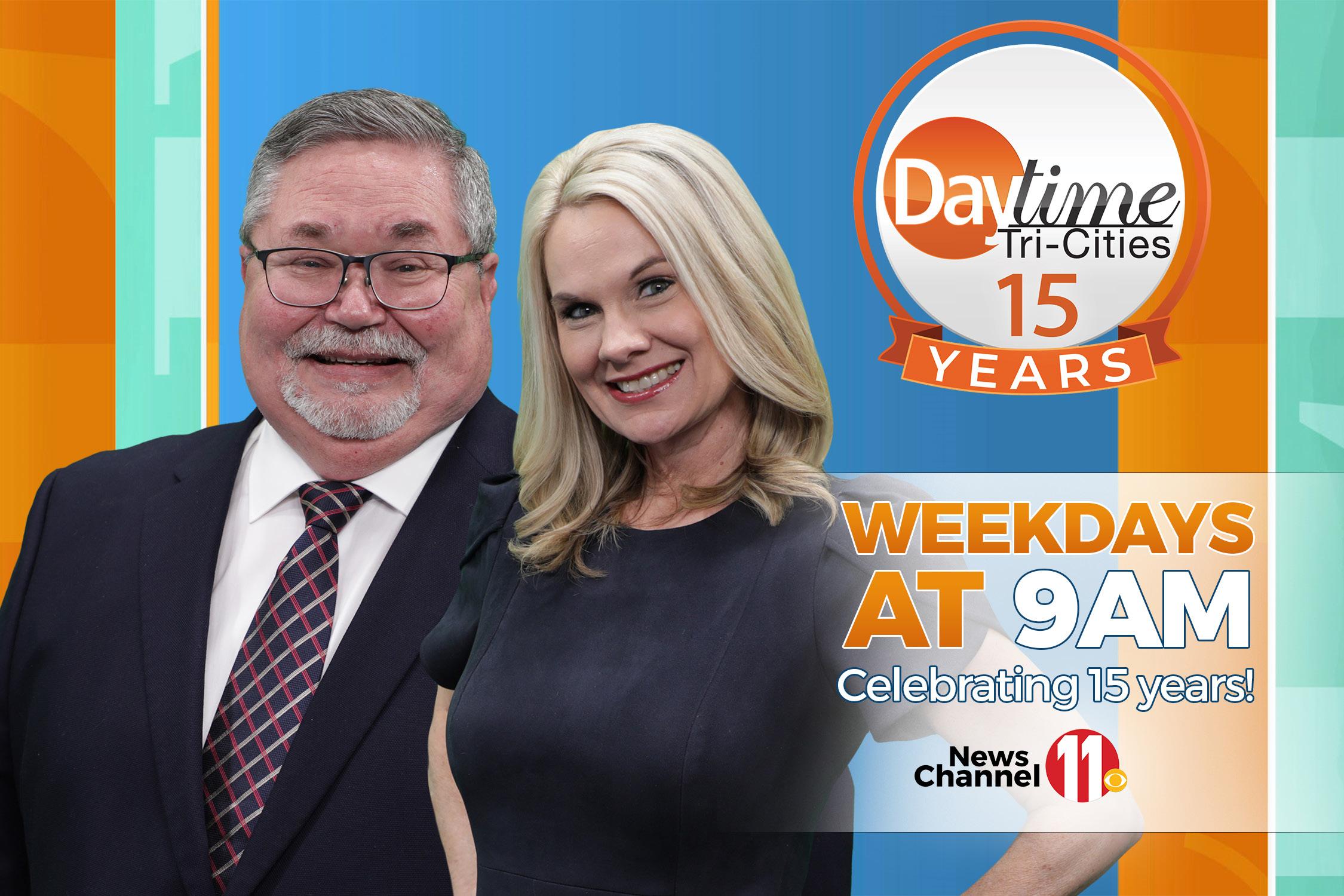
Fall begins slightly after the midpoint of September. The arrival of fall may be met with joy that cooler temperatures and vividly colored leaves will soon be the norm. For others, the arrival of fall is met with some trepidation that shorter days will soon pave the way for less sunlight and the inevitable arrival of winter.
Fall begins on Saturday, September 23, 2023, in the Northern Hemisphere on what is known as the autumnal equinox. The National Weather Service reports that the 2023 autumnal equinox will arrive at 2:50 a.m. EDT on September 23. Those who are especially anxious for fall to begin can wake up in the wee hours of the morning and enjoy their first comforting spiced treat of the season.
Equinoxes are days during the year when the hours of sunlight and darkness are just about equal, or lasting 12 hours each. At the moment the equinox occurs, the sun will be directly over the Earth’s equator, which contributes to this even distribution of day and nighttime hours. National Geographic describes the equinox as “the event in
which a planet’s subsolar point passes through its Equator. It is when solar declination is 0 degrees.” Solar declination refers to the latitude of Earth where the sun is directly overhead at noon. The equinoxes are the only times when both the northern and southern hemispheres experience roughly equal amounts of daytime and nighttime.
After the autumnal equinox, the subsolar point continues to move south as the southern hemisphere tilts toward the sun. Around December 21, the subsolar point hits the Tropic of Capricorn (23.5 degrees S), which marks the winter (December) solstice, or the day with the fewest hours of daylight during the year in the northern hemisphere.
It’s important to note that the equinoxes and solstices are opposite in the hemispheres. The northern hemisphere’s fall equinox occurs on the same day as the southern hemisphere’s vernal (spring) equinox.
The autumnal equinox is a time when hours of daylight and nighttime are equal, something that will not occur again until the arrival of spring.






Written by




 Melissa Sneed Wilson
Melissa Sneed Wilson







A cynical economic consultant, grieving the loss of his parents, butts heads with a Christmas-obsessed hospital administrator over their town’s annual holiday festival. As they navigate their feelings about Christmas and each other, they learn maybe they aren’t that different from one another after all.

Click here to order.


Written by Michael
Gryboski
Carla was a lioness in winter. Years of living in a violent world have finally taken their toll. Haunted by nightmares, guilt-stricken by the many lives she had ended, Carla finally breaks. As she tries to piece her life back together, she encounters a nice young woman with disturbingly familiar secrets.

Click here to order.
Written by Julia Russo

Illustrated by Grace Metzger-Forrest


Delightful illustrations bring you inside Grandpa Charlie Green’s mountainside farmhouse. Join Maggie the cat, Pip the goat, Grandpa Charlie Green, Daddy, and of course, little Wilhelmina Olive Blessing, as she tells us this sweet wintertime story. What do they do to get little Maggie home? Join the fun. Read out loud yourself or read along with others! You will love the story of Maggie, the cat who comes home for Christmas.
Click here to order.


Written by Mike Grindstaff

Marwin Gelstone has had a rough year. His partner’s wife committed suicide, and he was almost murdered by a local gynecologist as he uncovered the doctor’s murderous intentions. The trauma of the assault derailed his life, and he spiraled down, almost losing everything important to him. As he struggles to regain normalcy and rebuild the relationships dear to him, Marwin becomes involved in another pharmaceutical investigation. Will his new lease on life only give him a second chance to die?
Click here to order.
Jan-Carol Publishing, Inc. is a small independent publishing press with a motivated force of authors. Mountain Girl Press, Little Creek Books, Express Editions, DigiStyle, Broken Crow Ridge, Fiery Night, Skippy Creek, and RoseHeart Publishing are all imprints of Jan-Carol Publishing, Inc.




















Written by Crystal Gilpin Jones
Always Remember, Your Story is Still Being Written... is a daily devotional to encourage those who are going through tough times. Their story is not over, God is still writing their story. To encourage others not to lose focus, don’t lose hope when circumstances seem impossible, and know that He still controls the



, the baby Sophia-Emma is now a teen of color struggling with her parents, Loving and Pulsar, while protecting her little brother, Christopher, in historic Africatown, Alabama. She is slowly discovering an innate power to calm a hurricane and heal those closest to her. Her Creator seems to be calling her back to her roots at Promised Land. Her quest will eventually lead her to dangers even a Spirit-Goddess







These Haunted Hills: Book 5 is compiled of frightening stories from eight skilled authors. Here in Appalachia, you’ll find abandoned abodes and supernatural entities sure to have you checking under your bed. The frightful tales within make this yet another unforgettable installment to Jan-Carol Publishing’s annual anthology series. For the nightmare-loving reader, These Haunted Hills has everything you need, except, maybe a nightlight.

Click here to order.
Written by Jan Howery
When brothers Jackson and Brandon Taylor vanished without a trace at the airport, their girlfriends Jan and Allison are left heartbroken and confused. The women have no idea where the brothers went, or how they disappeared from the airport. After years of no clues, Jan and Allison move on with their lives. Allison soon meets an investigator who reveals that there’s a secret ongoing investigation of the brothers. Secrets, lies, and deception abound in Gone Before Breakfast!
Click here to pre-order.

Come to Shoney’s in Abingdon, VA to listen to a presentation on “Fact Based on Fiction” presented by Linda Hoagland, Tuesday, September 12, 11:30 a.m. to 1:30 p.m. This is a general meeting for the Appalachian Authors Guild and all are welcome to attend.

Frechia Collins
Author of Great Granny and Her Yucky Old Cat


Saturday, September 23, 11 a.m. – 3 p.m.
Book signing Heart of Home Duncan, SC
Mike Grindstaff
Author of Moon Over Knoxville and Second Chance to Die

Saturday, September 7, 5 p.m. – 7 p.m.
Book Signing
Johnson City Country Club Johnson City, TN
Author of The Lindsay Harris Murder
Mystery Series, The Best Darn Secret; and anthologies Easter Lilies; Broken Petals Wild Daisies; Scattered Flowers Dreams; and These Haunted Hills
Friday, September 1, 10 a.m. – 4 p.m.
Book Signing
Food City
Lebanon, VA
Saturday, September 2, 10 a.m. – 4 p.m.
Book Signing
Food City
Pulaski, VA
Sunday, September 3, 11 a.m. – 4 p.m.
Book Signing
Big Walker Lookout Wytheville, VA
Monday, September 4, 11 a.m. – 4 p.m.

Book Signing
Big Walker Lookout
Wytheville, VA
Friday, September 8, 10 a.m. – 4 p.m.
Book Signing
Food City
St. Paul, VA
Saturday, September 9, 10 a.m. – 4 p.m.

Book Signing
Food City
4307 Roan St, Johnson City, TN














Tuesday, September 12, 2023




Appalachian Authors Guild meeting



11:30 a.m. – 1: 30 p.m.
Speaker: Linda Hudson Hoagland –“Fact Based Fiction” Shoney’s Abingdon, VA
Friday, September 15, 10 a.m. – 4 p.m.
Book Signing
Food City
Euclid Ave, Bristol, VA
Saturday, September 16, 10 a.m. – 4 p.m.
Book Signing
Food City, Galax, VA
Friday, September 22, 10 a.m. – 4 p.m.
Book Signing
Food City, Gray, TN
Saturday, September 23, 10 a.m. – 4 p.m.
Book Signing
Food City, Wise, VA
Sunday, September 24, 11 a.m. – 4 p.m.
Book Signing
Big Walker Lookout
Wytheville, VA
Friday, September 29, 10 a.m. – 4 p.m.
Book Signing
Food City
Bluefield, VA
Saturday, September 30, 9 a.m. – 4 p.m.
Book Signing
Burke’s Garden Festival
Burke’s Garden, VA
Raven Howell
Author of Seasons

Saturday, September 30, 10 a.m. – 4 p.m.
Brooklyn Book Festival
Brooklyn Commons at MetroTech
Brooklyn, NY

is celebrated each September to raise awareness and focus America’s attention on our greatest asset–our children.
Shell Racers is a beautifully illustrated book that will engage any young reader. The illustrations capture the excitement and emotion of the moment for each turtle in their quest to win the prize—a head of cabbage. Explore the adventures of these two turtles who chose to race for a mouth-watering head of cabbage instead of deciding to share it. They soon find out that they both lose in the end.

Pete’s world is sad and lonely. Not only does he not like anything about himself, but he doesn’t fit in with the other kids. It isn’t until Pete’s misfit guardian angel, T. J., teaches him the art of loving himself that Pete becomes happy and fulfilled. The book is a delight for adults to read and children will enjoy the heartwarming message about self image and loving oneself.
Andy and the Beats is a story of hope and encouragement in the face of adversity. The goal is to teach kids the importance of being patient and persistent in their journey to understand how to live with a chronic illness. The author wants kids to grapple and grow with empathy as they face new challenges through adolescence, whether physical, mental, or emotional.

The adventures of Piddle Diddle, the Widdle Penguin takes the young reader into the many journeys of an adventurous, delightful penguin. On this adventure, Piddle Diddle, the Widdle Penguin travels to a Texas ranch for a Longhorns cattle roundup! Educational and fun reading!

This book of poems was designed to help promote a child’s ability to read and to help them understand how reading can be fun and engaging. This book is colorful with engaging illustrations to each from ABC’s to understanding counting and opposites.

Order this book directly from JCP — for a discounted price and FREE shipping! Go to the “JCP Book Shop” at www.jancarolpublishing.com.

The best way to make sure you will have a good day is to plan one every morning. Leo, an old hound dog, does just that by watching the beauty of a sunrise every morning and thanking God for the day ahead of him. With each passing year, he shares his wisdom and faith with his friends, old and new, and brightens everyone’s days along the way.
The Joy of Being You uses the humorous differences in two dogs and the Myers-Briggs Type Indicator (MBTI) personality preferences to help children find joy in who they are. ”In this inspired picture book, Rick Toomey celebrates the differences that make us special through the stories of his last two pets. As you get to know Mia and Beau—two very different dogs—their contrasting yet beautiful personalities will win you over. Their adventures help us see the strengths in not only our unique take on the world, but also that of those around us.” —Micki Bare, Author of The Hubbleville Series

Live Like Grunt is a story about a yellow lab who gave the Burdine family unconditional love and loyalty for about a dozen years. Grunt was his name and love was his game. Miles and Denise Burdine brought Grunt home for their three girls, Nikki, Laura and Alyce. His name came from Miles, who is a USMC Colonel, also known as a “Grunt.” They do the hard work, the dirty work, the groundwork... the Grunt work. Grunt Dog also adorably ‘grunted’ quite a bit as a puppy. Grunt followed the girls wherever they went, did whatever they did and was always happy to do so. The feeling was mutual. But the girls slowly learned, it was Grunt’s attitude that was worth emulating.
A delightful fun story of a little girl and her beloved Basset Hound brought to life by charming illustrations. Beautifully illustrated and any child will love this adventurous story of a Basset Hound dog and growing up in a dog loving family.




Show appreciation to our four-legged friends who often play a huge role in the lives of human beings!
“And said, Verily I say unto you, Except ye be converted, and become as little children, ye shall not enter into the kingdom of heaven.” Matthew 18:3 KJV

Interpretation: And he [Jesus] said, “Truly I tell you, unless you change and become like little children, you will never enter the kingdom of heaven.” Matthew 18:3 KJV
It just happens along the way. When it comes to faith, adults learn how to doubt. We’re skeptical. We’re jaded. We try to intellectualize everything. We’re not sure God hears our prayers, or that even if He hears, He might have more important things to do than answer us. We complicate faith.
But what about kids and faith? Children are amazing!
Without difficulty, they believe God is sovereign. They believe that God is all-powerful, all knowing, and that He’s everywhere. They have no doubts that God can reside in their lives. They believe God hears their prayers and will answer them. They have no doubts.
Years ago, we had a bit of a cat fiasco in our home. I’m not a huge animal lover and my kids brought home a cat. This did not make me happy. My family took the cat to the vet to get fixed. When they returned later to pick it up, the cat was so spooked that it ran away.
Cathy called me at the office to tell me what happened. I felt bad for my kids, but I was happy. I thought to myself, “God does answer prayers!” Then I had to go home and empathize with my children and pretend that I cared.
At this point, my oldest daughter—then seven-yearsold—decided to start a prayer marathon. She said, “Dad, I’m going to pray for the cat every day.” I tried to encourage her and said, “Great. We do the possible with faith that God will do the impossible. Let’s put up signs and go knock on doors.” But she just wanted to pray.
Two months later, we received a phone call from the vet. The cat came back. I faced a major dilemma right there and then: should I tell my family or not? This wasn’t an easy decision for me. I wrestled with what to do, but in the end decided to tell my family and use the occasion as an opportunity. I asked my daughter, “Have you been praying for the cat every day?” “Yes, Dad. I’ve been praying for the cat.” I said, “Well, I’ve got good news for you. The cat came back.” Then she said, “I knew it would. I had no doubts that God would answer my prayer!”
Right there, in front of me, I saw my daughter demonstrating faith, both pure and strong! That day still sticks with me as a huge reminder of what Jesus was saying when he told His audience about the importance of childlike faith.
Yes, in the adult world, life is complex and we strive to become mature in our thinking, our attitudes, our relationships and our behaviors. But in the arena of faith, as counterintuitive as it might seem, Jesus points to children as the model for mature faith. Children believe. Children trust.


Today, if you find yourself struggling with doubts, skepticism, and cynicism about God’s place in your life, it’s time for a change. It’s time to recapture the childlike wonder of faith and trust. And as Jesus reminds us, it’s the mature thing to do. Source: www.homeword.com




Gynecologic cancers originate in a woman’s reproductive system. There are many different cancers that fall under the umbrella of gynecologic cancer, but the five main types are cervical, ovarian, uterine, vaginal, and vulvar. According to the Centers for Disease Control and Prevention, at present, only cervical cancer has a screening test. However, it is important to note that gynecologic cancers are typically easily treated when detected early.
It is of the utmost importance for women to learn as much as they can about gynecologic cancers, particularly the risk factors associated with these diseases. This can help individuals get the help they need if gynecologic cancers may be present. Yale Medicine, the CDC and Northwestern University identify these factors that may increase risk of developing gynecologic cancers.
• Presence of the human papillomavirus: HPV is linked to cervical, vaginal, and vulvar cancers. HPV is a common sexually transmitted infection. A test called the HPV test
looks for HPV infection, according to the CDC. Safer sex practices are recommended, as is getting an HPV vaccine, which is available for girls and young women.
• Age: Age is a risk factor. For example, women who contract uterine cancer are typically around age 63 at the time of diagnosis.

• Family history: Genetics can play a role in the development of gynecologic cancers. A family history of breast or ovarian cancer may warrant a frank discussion with a gynecologist about gynecologic cancer risk.

• Endometriosis: Women diagnosed with endometriosis, which occurs when endometrial tissue grows in abnormal places in the abdomen, are at increased risk for ovarian cancer.
• Conditions that weaken the immune system: Women who have HIV or other conditions that weaken the immune system may not be able to fight off health problems that can lead to cancer.
• Smoking: Smoking may prevent the body’s immune system from getting rid of infections that can lead to gynecologic cancers. Carcinogens in cigarette smoke also may cause cancer.
These are some of the risk factors associated with the most common gynecologic cancers. Individuals can learn more by speaking with health providers when they go for annual examinations or health screenings.
According to U.S. News and World Report, financial abuse of the elderly has increased since 2013. This statistic means that scammers have had twenty years to perfect their art of conning the elderly.
Some of the most susceptible seniors are those that have recently experienced the loss of a spouse, especially if those seniors have spent fifty-plus years together. It’s common for a mourning senior to fall prey to scammers who lock onto their loss. Con artists will call or text the elderly, playing into their needs for close attention. It’s not just women who fall into these scams. Men are equal recipients.

There are warning signs to let family members know if their loved ones are being preyed upon, but let’s begin by noting some things to avoid that will help protect your aging parents.
• Never add a loved one’s address in an obituary. Scammers troll newspapers and social media, seeking ways to contact grieving seniors. Protect your loved one by keeping their address, phone, and social media on the down low. Keeping personal information at bay is the first line of defense.
• Forward mail. This option is not always possible, but if it can be done, do it. Forwarding elderly parents’ mail to a responsible family member removes the possibility of phishing scammers. Fake donations, home repair or paving letters, and even local fundraisers can become open doors to take advantage of older adults. Forwarding mail allows suspicious letters to be dealt with appropriately.
• Never give pertinent financial information to anyone over the phone or in person. Financial institutions, electric, telephone, or other utility companies, even credit card companies or the IRS, will never ask for your social security number. This ploy is a serious red flag.
• Never leave valuables within easy access when caregivers come and go into the home. Reliable non-medical companies will tell clients upfront to put away valuables. Even with background checks, one cannot predict what a once-trusted person will

do when placed in a difficult situation. Be sure to put away valuables.
• Never give credit card information to strangers. Giving credit card information seems like a no-brainer, but in today’s world, even the savviest folks are fooled by scams. Scammers replicate company logos and letter headers, all of which look real. The best school of thought—when in doubt, say NO! Many families open accounts with minimal money and secure ATM or credit cards based on $500 or less. Should an elderly person give their card information out and it is a scam, the scammer only escapes with a small amount of money.
Take time to discuss these types of fraud with your aging loved ones. Secure their finances, take additional steps to protect them by making social media accounts only visible to family and blocking the ability of others to request friendship. Be proactive in your loved one’s life to catch fraudulent attempts early.
Financial abuse is active and prevalent. Don’t let your loved one become a victim.
After 30 years of being a nurse, I decided to further my education in teaching. We moved a few blocks from the University of Texas, Pan Am, and I wanted to get a teaching degree.
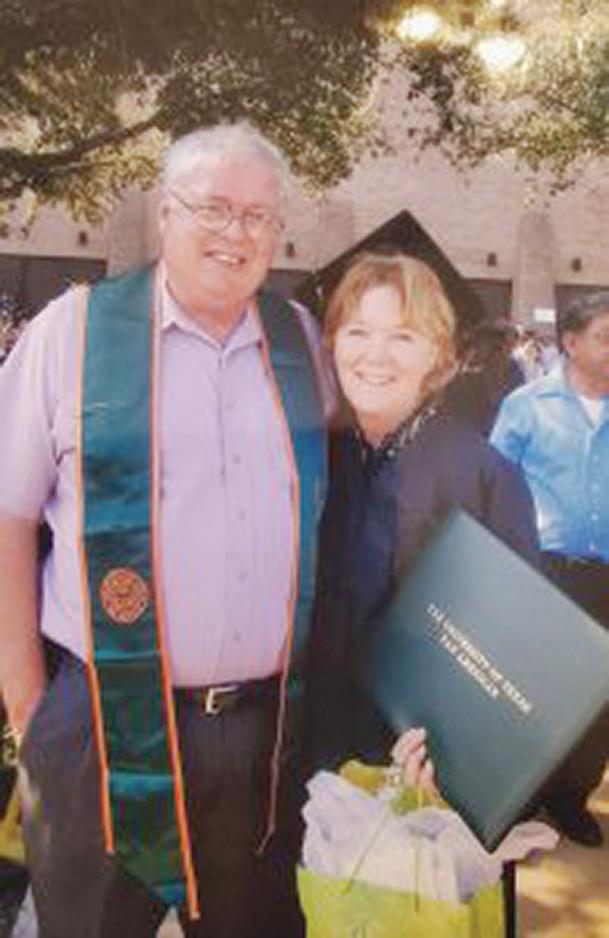
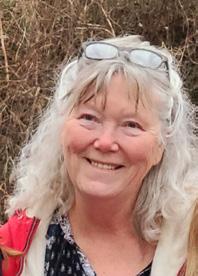
I was 54, and my brain had to open a folder I had put away long ago. The most challenging class I had to take was calculus. I was never very good with numbers. However, once I sat down in my first calculus class, my fears began to subside a little. When I felt the irritation, I slowed my breathing and focused on what I knew. You know, 2+2 is four unless it is –2+2, which would ultimately cancel each other out and be zero—like the lights suddenly going out.

I began to see math as electrical wires. With each interaction, I knew that if I connected the correct wire with the right color, there would be a balance, but if I joined the wrong colors, I might cancel myself out. When one route did not work, I tried another until I found the two parts that went together. I could compare balancing equations, such as completing the square, to life in general. If everything is on one side of the equation, it is not a perfect square, and if you balance one side, you must balance the other. So is life. We must balance our lives.
When I felt confident about completing my square, it was time to learn how to graph, but first, I had to know how to find my numbers. That required learning a new vocabulary, like X is my domain and range is my Y.
Lines are more than math lines. It depends on where your pipes are headed; vertical, horizontal, or diagonal, all have their meaning. If it is vertical, it is functional as long as the numbers do not repeat themselves. If it is horizontal, we must use the vertical approach to see if one
of the numbers has repeated itself. If there is a number that has repeated itself, then it is not a function. But not to worry about diagonal lines. They are always functional because they are from infinity to infinity.
So now, I had graphs in my head. The only place I could think I might use these was in hanging pictures, but at least I knew. Or so I thought, but the graphs curve and twist more freely up and down. There went the wires in my head, connecting with the wrong color. I felt a blackout coming on.
At home, there was no solace or pity for my difficulty learning this subject. First, my husband showed me that he used these strange graphs to build houses, and then I felt humbled because I did not recognize their importance.
I told him that the teacher changed directions whenever I thought I understood. He said I must see math differently. I must see it as a path that has many corners. Around every corner, there is something beautiful.
“Beautiful?” I asked.
“Okay,” he said. “Let’s say, something new and interesting.”
“Okay,” I finally agreed. “Maybe.”
In between my math classes, I went to see the tutor. One day, the tutor showed me something beyond where we were in the book.
“We’re not there yet,” I said.
“Okay, don’t worry, you will be,” he said.
A few days later, I was in class feeling like I was sitting in the middle of a million different colored tangled wires. But then, the teacher began to put equations, square roots, and strange graphs on the board. Suddenly, I found myself participating. I knew which direction he was going, and I was getting it. I was directing the answers as he drew graphs this way and that. He said he was pleased that I was relaxed and enjoying the class.
“It wasn’t bad,” I said.
I had already turned the corner!
According to the World Health Organization, cardiovascular diseases (CVDs) are the leading cause of death globally, claiming roughly 18 million lives each year. Various factors can adversely affect how well the heart functions, and that includes irregular heartbeat, also known as arrhythmia. Atrial fibrillation (AFib) is the most common form of arrhythmia, and it behooves anyone to gain a greater understanding of this condition.
The Cleveland Clinic notes that AFib is an arrhythmia that begins in the upper chambers of the heart known as the atria. When a person has AFib, these chambers beat irregularly, and the American Heart Association reports that, when this occurs, blood pools in the area because not enough blood is being pumped out of the atria. That pooled blood can clot and pose a serious threat.
The AHA notes that, if a clot forms, the blood can be pumped out of the heart to the brain, which blocks the blood supply to the brain and ultimately results in stroke. In fact, AHA data indicates between 15 and 20 percent of people who have strokes have AFib. In addition, the Heart and Stroke Foundation of Canada reports that one-fourth of all strokes affecting people 40 and older are caused by AFib.
The Cleveland Clinic notes that some people with AFib experience no symptoms. Such is the case in peo -
ple whose ventricles are beating at a normal or slightly elevated pace. When ventricles begin to beat faster, then individuals may experience symptoms that can include:
• Extreme fatigue
• Irregular heartbeat
• Heart palpitations
• Feeling of butterflies or fish flopping in the chest
• Dizziness or lightheadedness
• Fainting
• Shortness of breath
• Chest pain


The AHA notes that adopting and maintaining a heart-healthy lifestyle is the best way to control AFib risk. Such a lifestyle includes:
• Regular physical activity
• Adherence to a heart-healthy diet that is low in salt, saturated fats, trans fats, and cholesterol
• Controlling blood pressure, including management of high blood pressure
• Avoid excessive consumption of alcohol and caffeine
• Avoid smoking
• Maintain healthy cholesterol levels
• Maintain a healthy weight
•
We are a perfect choice for:
• Short-Term Rehabilitation
• Long-Term Care

• Post-Operative Recovery Life
Stop by today f a tour!
791 Old Gray Station Rd • Gray, TN 423.477.7146 • lifecarecenterofgraytn.com
Researchers behind a 2021 study published in the journal Progress in Cardiovascular Diseases note that AFib has sometimes been characterized as the cardiovascular epidemic of the twenty-first century. Such a characterization underscores how significant a global health threat AFib can be. More information about AFib can be found at heart.org.

Grillmasters insist that just about everything tastes a little better when cooked over a flame. Even though grilling often is reserved for lunch or dinner, there’s something to be said about preparing breakfast on those hot grates as well.


Makes 4 servings
1 loaf Italian bread
8 ounces cream cheese, at room temperature
4 tablespoons confectioners’ sugar

1⁄2 teaspoon almond extract



3⁄4 cup blueberries
5 eggs
1 1⁄2 cups half-and-half or milk

1 teaspoon vanilla extract
Pinch of kosher salt
Oil for coating grill grate
1⁄4 cup Orange Honey-Butter Glaze
Makes 3 or 4 waffles
2 1⁄4 cups gluten-free flour (conventional all-purpose flour may be substituted; reduced by 2 tablespoons)
1 teaspoon sugar
1 1⁄2 teaspoons baking powder

1⁄4 tablespoon salt
1 cup room temperature oat milk or flax milk
1 1⁄2 tablespoons melted butter or non-dairy butter
1 teaspoon vanilla extract
1⁄2 teaspoon apple cider vinegar
1. Cut off and discard a small diagonal slice from each end of the bread. Cut the bread on the diagonal into about eight 1 1⁄2-inch-thick slices. Cut a slit through the top crust of each slice to form a deep pocket.
2. In a medium bowl, mix together the cream cheese, 3 tablespoons of the confectioners’ sugar, and the almond extract. Stir in the blueberries and spoon the filling equally into the bread pockets. Lay the stuffed slices of bread in a shallow 4-quart baking dish, such as a 15-by-10-inch dish.

3. Clean and dry the bowl, then use it to whisk together the eggs, half-and-half, vanilla extract, salt, and remaining 1 tablespoon confectioners’ sugar. Pour the mixture evenly over the bread.
Carefully tilt the pan and swirl the egg mixture to completely coat the bread. Let sit for 30 minutes, or cover and refrigerate for up to 8 hours.
4. Heat the grill to 350 F for a gas grill, medium ash for charcoal, and medium ash for wood.
5. Brush the grill grate and coat it with oil. Put the French toast on the grill and cook until nicely browned and crisp on the outside, about 5 minutes per side. Transfer to a platter and, using a pastry or basting brush, brush both sides with the Orange Honey-Butter Glaze.
Makes 1⁄4 cup
2 tablespoons butter, well softened
1 tablespoon honey
1 tablespoon grated orange zest
Pinch of grated nutmeg
• In a small bowl, mix all ingredients until creamy and spreadable like icing. Refrigerate for up to 2 weeks. Soften to a spreadable consistency before using.
1. Mix the flour, sugar, baking powder, and salt in a bowl. In a separate bowl, combine the oat milk, butter, vanilla, and apple cider vinegar, then slowly add the dry ingredients to the wet, whisking to combine.
2. Grease a waffle iron and preheat. Pour about 1⁄2 cup of the batter into the waffle iron and let stand for 30 to 45 seconds, then close and cook approximately 3 to 5 minutes. Gently open to check, adding an additional 1 to 2 minutes if needed. Repeat with the remaining batter.
Tip: Add freeze-dried berries, whole or powdered, or even blue spirulina or pitaya powder to get colorful waffles with fruity flavors and even a bit of crunch. Alternating colors of waffles is fun, nutritious, and festive.

I’ve got a ton of photos in my collection, but last month, as I made my 61st lap around the sun, I paid particular attention to two of them. One was me as a kid, probably a couple of years old, tousled blonde hair across my forehead, grinning ear to ear surrounded by a pile of birthday presents. The other, taken a few days before I wrote this, of a bespectacled, greying man looking every bit of my six decades. I paused at the photos. What would I tell that kid on the left if I could go back in time?
I’d tell him life is good, but it goes faster than you’ll
ever imagine. When you feel down, know that there’s an “up” that follows. I’d tell him to love hard, even when it means falling harder—the ones that walk away weren’t worth all you had to offer in the first place, and the real ones will always be by your side. That the first impression and last words you have with someone will be what sticks around in their minds and yours.
I’d tell him that there will always be dogs, good fine dogs, and you’ll love each one with an ever-growing heart that they’ll each, in turn, break when they go, but the love they leave will keep that ol’ ticker full.
You’ll have mountains to climb, hips and knees that go bad, and too much weight you’ll always struggle with, but you’ll never stop moving forward. You’ll love your hometown as much as any man can love a place, and sometimes, that’ll hurt just as bad as loving a human being. That you’ll have family by birth, by badge, and by choice, and to treasure every one of those that are able to return your emotional investment while knowing there are those there only for a season—and you’ll take some hard knocks learning the difference between the two. You’ll think you’re destined to spend your life alone, and just when you do, you’ll find your soulmate, best friend, and your forever Angel, and you’ll be transformed by her love and consumed by your love for her, every moment of every day.
You’ll love music, old cars, Mets baseball, and Buccaneer football (even when they all break your heart). You’ll learn to follow God’s plan, stubbornly, but eventually. You’ll never be skinny or “fit,” but you’ll live life to its fullest, savoring your favorite foods, fine cigars, a good bourbon, a great tune, a wonderful wife, awesome friends, and fine, fine dogs. You won’t make the history books, but you’ll make a difference.



You’ll be just fine, kid.
Enjoy the cake.
DEAR DON: I’ve been married for 21 years, and lately my husband hasn’t been spending any time with me at all. He works long hours and doesn’t complain about that, but when he’s off, he would rather go fishing or spend time alone in the garage by himself. I’d like some time with him. It’s gotten to the point where I can’t even tell if he still loves me or not. I miss him and I love him, but I don’t know how to approach him about this. What should I do? – CINDY


HEY CINDY: Your issue could be really simple, or possibly a big deal. So, what I want to do is give you an idea of how to figure out which it is before getting to the meat n’ potatoes of the problem. There are really two bottom line possibilities. The first has absolutely nothing to do with you. It’s something simple, like maybe he’s just stressed more than usual, and being a stoic man, he’s trying

to cope without jeopardizing the faith you have in him. The second possibility is about you. He could be drifting away, feeling differently about you, or maybe just feeling unsure for some reason. The way to easily figure that out is in the bedroom. Yes, you read that right. Here’s the deal. If you initiate intimacy with him, you can tell where his heart is just by the way he acts. A man who loves a woman, even after years, will behave very differently from a man who isn’t feeling that same love. Physical expressions will change when there’s no love involved any more. For obvious reasons, I’m not going to get into bedroom details, but I’m sure you can figure out from this point which type of problem you’re facing.
Regardless of whether his problem is with you or not, the one thing that you need to do is talk to him. Don’t let it go on any longer without being addressed, because problems don’t fix themselves, and a wound not given an opportunity to heal will only get worse. The best thing to do is be direct but don’t show discomfort with discussing the issue. Seeing you talk about your concerns without being uncomfortable will prompt him to engage openly in the same manner. Because men tend to handle situations in a more practical manner, by avoiding emotions that can complicate the process of solving problems, we react better to others who approach situations in the same way.
I hope that helps. Good luck and God bless. – DON GRIMM
“For the male perspective”







YWCA is currently accepting referrals for the MOMS R US teen pregnancy & parenting program, which offers free support and educational classes to expectant and actively parenting teens who are 19 years and younger. Participants receive FREE Prepared Childbirth, Parenting and Support Groups in Bristol TN/VA, Johnson County TN, Sullivan County, TN, and Washington County, VA. Each teen parent will receive a free baby item and a meal or snack at each class. Upon completion of all classes, participants receive a free convertible infant/toddler car seat.
For over 30 years, Moms R Us has given opportunities to empower teen parents to reach their goals, overcome barriers, and lead happy and successful lives. As Sir Francis Bacon stated, “Knowledge is power,” and the Moms R Us program enables teen parents to make informed decisions for their babies and their own well-being. This program also provides intensive individual case

management, transportation, and referrals to community partner organizations.


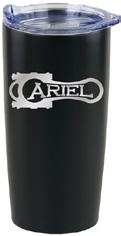



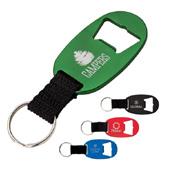



Ongoing support and parenting classes give young moms and dads essential knowledge and skills to help them adapt to their new roles.
For more information or to register for this free program, please contact the YWCA at teenpregnancysupport@ywcatnva.org , 423-968-9444 or visit the webpage www.ywcatnva.org/moms .
YWCA Northeast Tennessee and Southwest Virginia is on a mission to eliminate racism, empower women, stand up for social justice, help families and strengthen our community. YWCA is part of an international movement serving over 2 million in the United States and 25 million worldwide. For comprehensive information about this important work, go to www.ywcatnva.org and www.ywca.org

The
Surrounding
CLUES ACROSS
1. Emaciation
6. Million barrels per day (abbr.)
9. Light dry-gap bridge system (abbr.)
13. Anatomical term
14. Tropical starchy tuberous root
15. Jewish calendar month
16. Round Dutch cheese
17. Western Pacific republic
18. List of foods
19. It can strike the ground
21. Drenches
22. Some are cole
23. __ Squad
24. Expresses emotion
25. One point east of due south
28. Satisfaction
29. Holds nothing back
31. Top of the body
33. Not well-liked
36. Did slowly
38. Greek goddess of the dawn
39. Gland secretion
41. Vital to existence
44. Aristocratic young women
45. Erik __, composer
46. Not young
48. Jewish term for “Sir”
49. Secondary school
51. __ student: learns to heal
52. Regarding 54. Highly excited
56. Mainly
60. Thin, narrow piece of wood
61. Cakes
62. Biomedical nonprofit 63. Dried-up
64. One who is symbolic of something
65. Body part
66. Muslim ruler
67. Women from Mayflower
68. Notes
CLUES DOWN
1. Not us
2. Helper
3. Bleat
4. Type of chair
5. Jr.’s father
6. Necessary for certain beverages
7. Hillside
8. Dutch painter Gerrit __
9. Gave a new look
10. Ancient Greek City
11. Confidence trick
12. Type of fund
14. From an Asian island
17. Malay boat
20. Western Australia indigenous people
21. Cluster on underside of fern frond
23. You need it to get somewhere
25. The woman
26. It may be green
27. Makes less severe
29. One from Beantown
30. Cavalry sword
32. Metric linear unit
34. Hawaiian dish
35. Yokel
37. Dissuade
40. Mutual savings bank
42. __ Caesar, comedian
43. Primordial matters
47. We all have it
49. Hermann __, author of “Siddhartha”
50. Historic MA coastal city
52. Shady garden alcove
53. Small amount
55. Horse-drawn cart
56. Nocturnal rodent
57. Spiritual leader
58. Air mattress
59. Speaks incessantly
61. Auction term
65. Atomic #62







































































